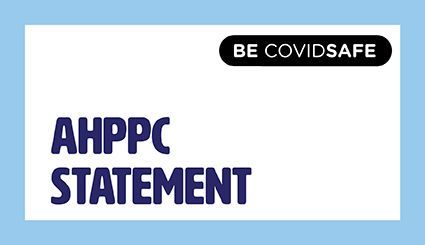
State and territory health authorities will decide whether large events at stadiums, arenas and large theatres proceed. They will do this based on the COVID-19 situation. When planning for these events, organisers should:
- take into account general advice for large gatherings, and
- address all risks.
Events in large venues carry risk of COVID-19 transmission due to:
- Their large numbers
- Crowding and queuing
- People are in close proximity, mixing
- Loud volume speech, cheering, and singing
- Ventilation can be poor (indoor venues)
- An increased risk of the virus being on surfaces
- People who travel from (and return to) regional and interstate areas
These factors all represent a risk to control of COVID-19 and starting new outbreaks across Australia. Event organisers must conduct a risk assessment. They must also develop a risk management plan for these type of events (see below), specific to each venue. AHPPC encourages innovative approaches to managing identified risks, for example:
- Requiring people to declare they are well upon entry
- Refunding ticket costs for those who cannot attend because of illness
- Encouraging different ways to cheer e.g. via devices, including for people at home
Risk assessment
Risk assessments and risk management plans should be specific to the event and venue. The risk assessment must consider:
- Local case numbers (and national case numbers if important)
- The type of event, including:
- the activities
- the length of the event
- if the setting includes indoor or outdoor spaces (or both)
- The risk factors linked to the event
- How organisers can manage risks (prevention and control measures)
- If the health system has capacity to respond to an outbreak
States and territories may ask event organisers to use specific risk assessment tools. For example, the World Health Organization (WHO) has developed a tool that:
- Gives a score to each risk factor and control measure
- Calculates an overall risk score
- Gives a defined risk category
- Helps with decisions
The WHO resources are available at:
Event organisers must review risk assessments at regular intervals. This is because risks may change over time. Prevention and control requirements will change over time too. It’s important to identify any learnings and share them with industry.
Key requirements
It is important to put all required public health measures in place, and to address and manage public health risks.
Put these public health measures in place, at a minimum:
- COVID Safe plans for all premises
- Messaging not to attend the venue if sick, stay at home and get tested
- Physical distancing measures
- Hygiene requirements (hand washing, cough hygiene and respiratory etiquette)
- Regular venue cleaning and disinfecting
- Density limits (where required)
- Restrictions on crowd numbers







